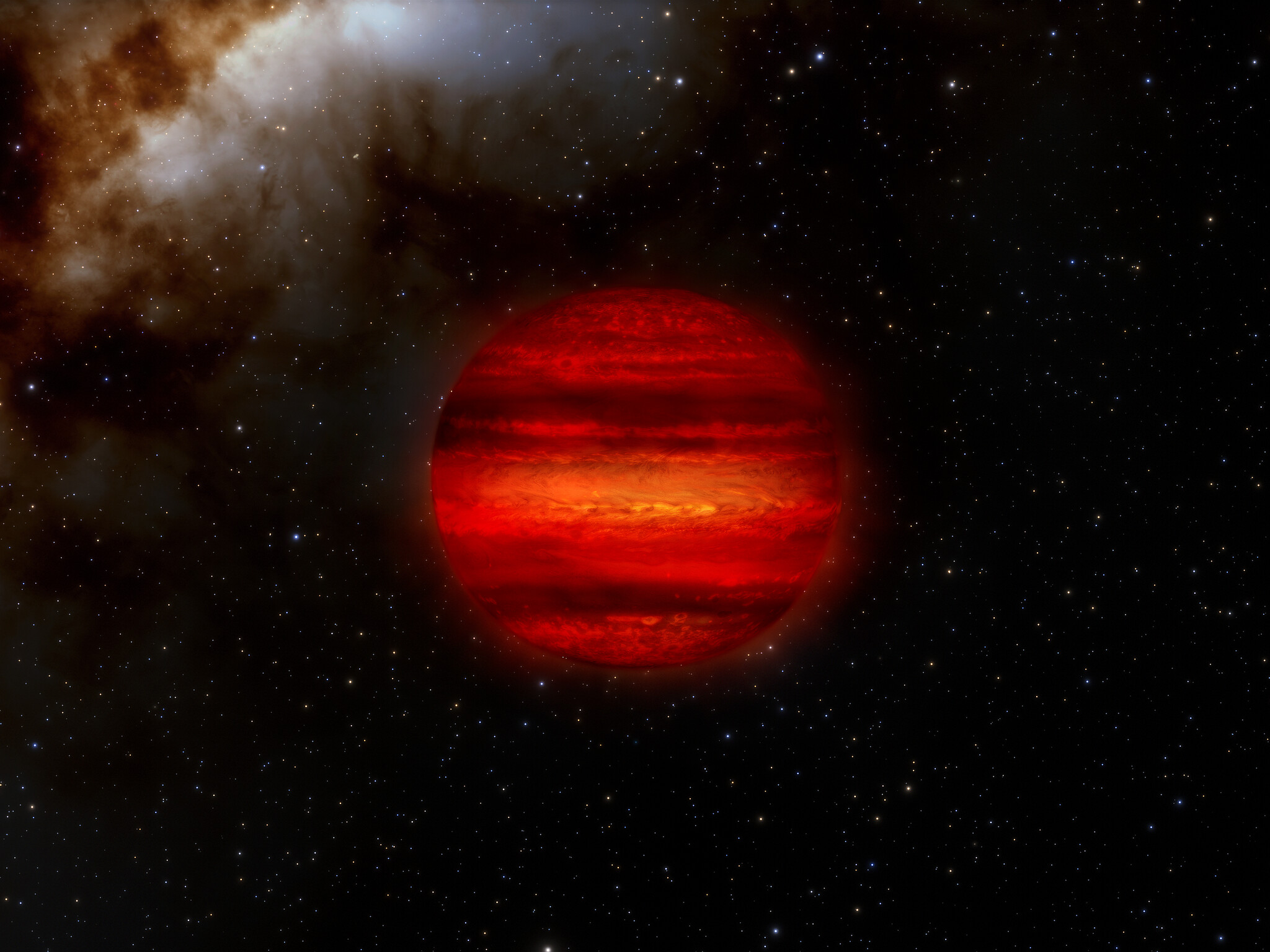Brown dwarfs at the speed limit
Brown dwarfs are formed when a newborn star does not have enough mass to ignite the nuclear fusion of hydrogen. This is their essential difference to giant gas planets – brown dwarfs form quasi first and in the center of the system, gas giants follow later. As central objects of their system, brown dwarfs naturally inherit the rotation of the protostellar cloud. But some of them apparently give extra gas later. Astronomers at Western University in Canada have now discovered three brown dwarfs that spin faster than any previously found, coming close to the theoretical maximum speed. The astronomers first measured the rotational speeds of these brown dwarfs with NASA’s Spitzer Space Telescope and confirmed them with follow-up observations with the Gemini North telescope on Maunakea in Hawai’i and the Magellan-Baade telescope at the Carnegie Institution for Science in Chile.
For example, the researchers found that these brown dwarfs rotate at their equator at speeds of about 350,000 kilometers per hour, which is ten times faster than Jupiter and equivalent to one rotation per hour. That’s about ten times faster than normal and about 30 percent faster than the fastest rotations yet measured for such objects. But why is there a speed limit? Brown dwarfs also have relatively low gravity because of their low mass. Above a certain rotation speed they would tear themselves apart. Then we would no longer be able to observe them. “We seem to have hit a speed limit on brown dwarf rotation,” said Megan Tannock, a Western University physics and astronomy student who led the discovery. “Despite an intensive search, by our own team and others, no brown dwarfs were found to rotate faster.”
The team first identified the fast rotation rates by measuring how quickly the brightness of the objects changed with NASA’s Spitzer Space Telescope. The researchers identified brown dwarfs virtually by their beauty spots – that is, by large storms like Jupiter’s Great Red Spot. “Brown dwarfs, like planets with atmospheres, can have large weather storms that affect their visible brightness,” explained astronomer Stanimir Metchev. “The observed brightness variations show how frequently the same storms occur as the object rotates, revealing the brown dwarf’s rotation period.”
